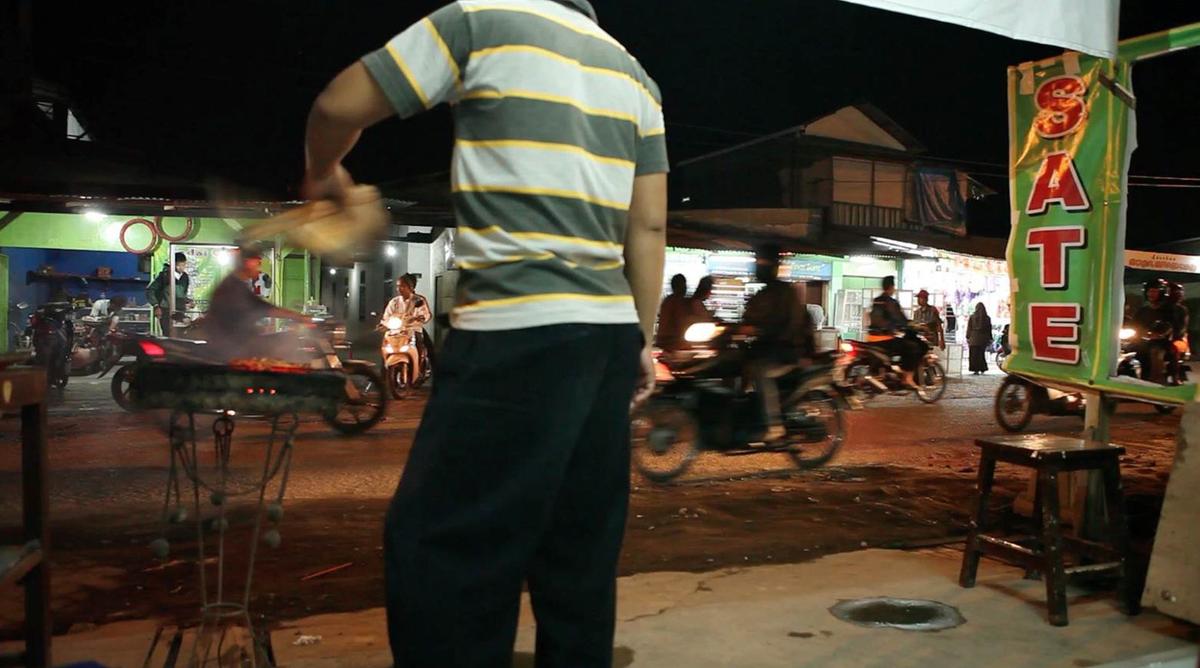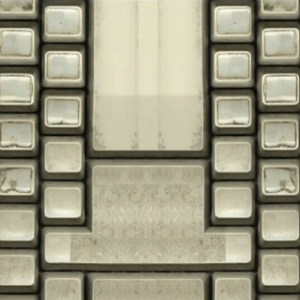A self-described nomad and cultural wanderer, Jae Hoon Lee has extensively investigated the negotiation of body and space through the specific lens of travel. Lee’s work whole-heartedly embraces the contemporary phenomenon of the itinerant artist charting an itinerant career from residency to residency, opportunity to exhibition. With Stranger in a Strange Land he pulls at a tension between meditative and ephemeral moments of travel versus the declarative expectations of an institutional level arts practice.
Stranger in a Strange Land is the result of Lee’s recent residency with the Dunedin Public Art Gallery’s Visiting Artist Programme, and also incorporates material shot in residencies elsewhere, in Europe and Asia.
The most immediately accessible piece here is Unguided Tour. Video footage of landscapes gathered from a ten-day camping trip to Milford Sound and Aoraki is projected into opposite corners of the gallery. Looming over the space, Lee's postcard-esque images of West Coast scenery are underscored by a barely perceptible movement. Each projection is mirrored upon itself forcing an imposed structure into the composition and treating the landscape bluntly as an aesthetic artifice. Each section in the video sequence is thematically echoed on the opposite side of the room; dual waterfalls play against each other, waves roll in under a dominating blue sky, each channel a different shot from its’ opposite. Steam, water, and clouds ceaselessly shift in an animated Rorschach pattern that almost distracts from the content of the images.

Still from Unguided Tour (2015) Jae Hoon Lee
As an entry point to the show Unguided Tour is at once familiar and alienating. This very deliberate approach to presenting landscape as spectacle underscores the amplified relationship that New Zealand has had with its natural environment through recent years, where the dual spectres of film and tourism post-Lord of the Rings throw their shadows across such depictions of this country. The imagery here is easy for even the most casual observer to recognise but it is not how we see ourselves but as we show ourselves to the world. Like "the most photographed barn in America" from Don DeLillo’s White Noise, we can no longer see ourselves outside of the camera’s viewfinder; when we photograph or film the landscape we are not capturing an image but maintaining one.
On a surface level Unguided Tour reads as the kind of display one could almost find at the Wellington airport welcoming tourists to the real-fictional Middle Earth. Ostensibly we are seeing this land through the eyes of a migrant, but Lee is smarter than this. While he is reflecting our world back upon us he is reaching for a transcendent space that exists behind the mirror. Here in the gallery, we are in a place where experience of specific environment now operates at the abstract level of commodity exchange and the land is doubled and then multiplied by representation. These are images not to be trusted and where they begin to break down we are returned from their unsatisfactory spectacle to an immediate present and presence of ourselves. Albeit one built upon rejection and negation of a hysterical sublime rather than an affirmation of an affective sublime.
This negation is not however an aggressive one as much it is an embracing of statelessness, the disconnected freedom of perpetual travel. This indeterminacy is manifest in the major installation On the Way to Bern. Staggered across nine television sets stepped across the far corner of the room this multi-channel work shows a cycle of footage shot from a train in Switzerland. The grey gravel of a railroad siding blurs past the screen until it appears to resemble a cacophony of video noise, while an intermittently appearing rail cuts across the screen like a VHS tracking band. The uneven rhythm of the footage from screen to screen and the subtle diegetic soundtrack of the rattling trains and the murmur of conversation intimate the indistinct hum of restless movement. It is in this liminal space of travel that Lee finds a transcendental threshold state between ennui and meditation.

Still from On the way to Bern (2015) Jae Hoon Lee
This state of transcendence through transition is visited again in two short video loops shot in Indonesia, Sate and Hotel Bandung. Both works consist of stationary shots that locate the viewer in a place of respite during travel. The former places us in a street-side restaurant watching a man fanning the coals of a freestanding grill as an endless stream of traffic rolls by. There is something performative in his actions through their incessant repetition, the fan in his hand seeming to direct the motion of the motorcycles and small trucks that flow past behind him. The restless activity of the scene is tightly framed on either side by blocks of lime green (from the sign of the restaurant and a shop across the street) creating a kind of proscenium. The viewer is now cast in the role of traveller-cum-audience, cast into a moment of enforced stillness and reflectivity amidst a place and time of movement.
Watching is a significant word here. Where most travel is described as the impulse to “see” a place, Lee conflates the act of travelling and the art of watching and a deeper observation of one’s surroundings that comes from being on unfamiliar ground. Even the passive and domestic act of watching television becomes a meditative exploration on the disorientation and alienation that emerges from the negotiation of self and space. In Hotel Bandung, a vaguely tawdry hotel room frames the screen-within-a-screen of a television inside a monolithic cabinet displaying a seemingly random cavalcade of images from a Muslim channel: natural history footage, logo graphics, and scenes of the Kaaba stream together in an indecipherable narrative. This disorientation in moments of rest demonstrates the underlying self-reflective nature of travel that Lee mines throughout his work. It is in the removal of all things familiar that are external to the self that we truly being to explore the relationship of ourselves to the world.
Lee’s work occupies the mutable terrain of the traveller in a realm where the landscape closest to home is the most alienating, constant movement has bled into a monotonous blur, and the blur has become mantra. It is purposefully difficult to find a true point of orientation in Lee’s work. The travelling here does not traverse distance but instead collapses distance, all places becoming the no-place where we now find ourselves, experienced through the intermediaries of lens and screen, and the land is strange indeed.

